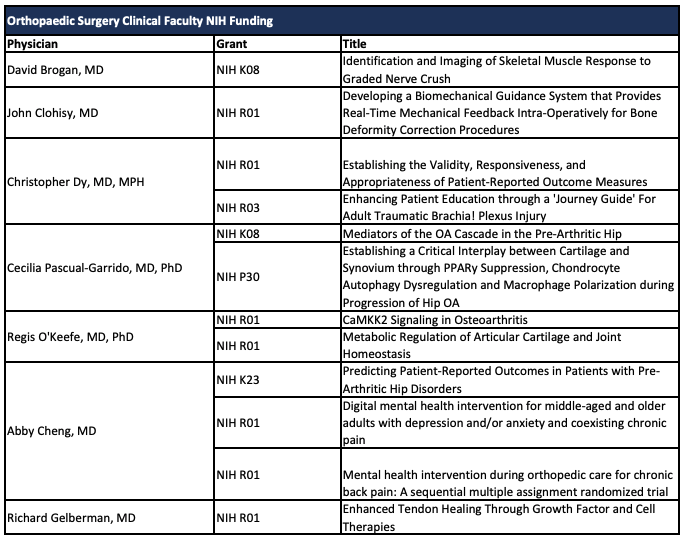April 10, 2023
Terms like “clinical trial,” “phases” and “FDA approval” are now household expressions. Thanks to COVID, the process by which a clinical therapy goes from development to trial to approval catapulted from relative obscurity to everyday discussion. While clinical research and trials may no longer live under a shroud of mystery conceptually, most people don’t understand the role of those behind the research. One of those roles is that of the clinician scientist.
The Basics
Basic science research is the study of an entity to gain knowledge and understanding about it. In medicine, it’s understanding the fundamentals of a disease on a cellular and molecular level, and how normal cellular function is disrupted by injury, aging, environmental influence or genetics. Clinical science research is the study of how that knowledge, gathered from basic science research, can be used to apply new and innovative therapies to patients.
Investing in Innovation
At Washington University’s Department of Orthopaedic Surgery, a robust team of both basic and clinical scientists work in tandem to investigate musculoskeletal disease and treatment. With five clinician scientists, three mentored clinician scientists and several clinical faculty working towards National Institutes of Health (NIH) funding, the Department also enjoys distinction as being one of the highest federally-funded orthopedic programs in the country. WashU’s orthopaedic research program currently ranks number three in the country, according to Blue Ridge Institute for Medical Research.
“There are very few clinician scientists in orthopedics because the role requires significant infrastructure to support,” says Regis O’Keefe, MD, PhD, the Fred C. Reynolds Professor and Chair of the Department of Orthopaedic Surgery. “We’re very fortunate to have a clinical research center with a long history of high-impact research. In the department of orthopedics, we’ve invested in and developed the infrastructure required [databases, technology, mentors, staff, physical space] to let individuals develop a programmatic approach to research.”
Projects, Programs and Multipliers
In projects, you ask a single question. In programs, you try to understand a disease process through a series of linked questions that build on one another. WashU’s orthopaedic research program boasts an impressive collection of studies, and is home to some of the most renowned orthopedic researchers in the world.
“The fact that we have clinician scientists in our department provides us a unique advantage,” explains O’Keefe. “We’re able to ask clinically-relevant questions and address important scientific questions — all by people who understand both basic science and clinical care.”
A key benefit of a clinician scientist is that he or she sees clinical problems, and the basic science solutions to those problems, from a special perspective. Their distinctive approach supports not only their own research programs, but also research activities around them. “In a sense they are multipliers. Clinician scientists are key because they can be multipliers in terms of being at the interface of basic and clinical science,” adds O’Keefe.
Funding the Future
As one of the top three NIH-funded orthopedic research programs in the United States for the last decade, Washington University’s orthopedic providers and research faculty are turning their scientific discoveries into future orthopedic treatments.

In addition to existing NIH grants, several clinical faculty members are working towards federal funding, laying the foundation for future investigative programs.
Achieving Success
The key to any successful program is having talented people and strategic partners. WashU’s orthopaedic research program achieves both. From academic trainees to clinical providers to researchers, the Department of Orthopaedic Surgery has a history of recruiting the best. And while the Department’s top-level researchers and mentors work to develop a cadre of outstanding incoming clinical and basic scientists, they do so with the help of hospital partners (including Barnes-Jewish Hospital, St. Louis Children’s Hospital and Shriners Hospital for Children) and Washington University School of Medicine’s departments and centers, collectively one of the nation’s most dynamic and robust research enterprises.
For more information on Washington University’s orthopaedic research, visit orthopaedicresearch.wustl.edu.